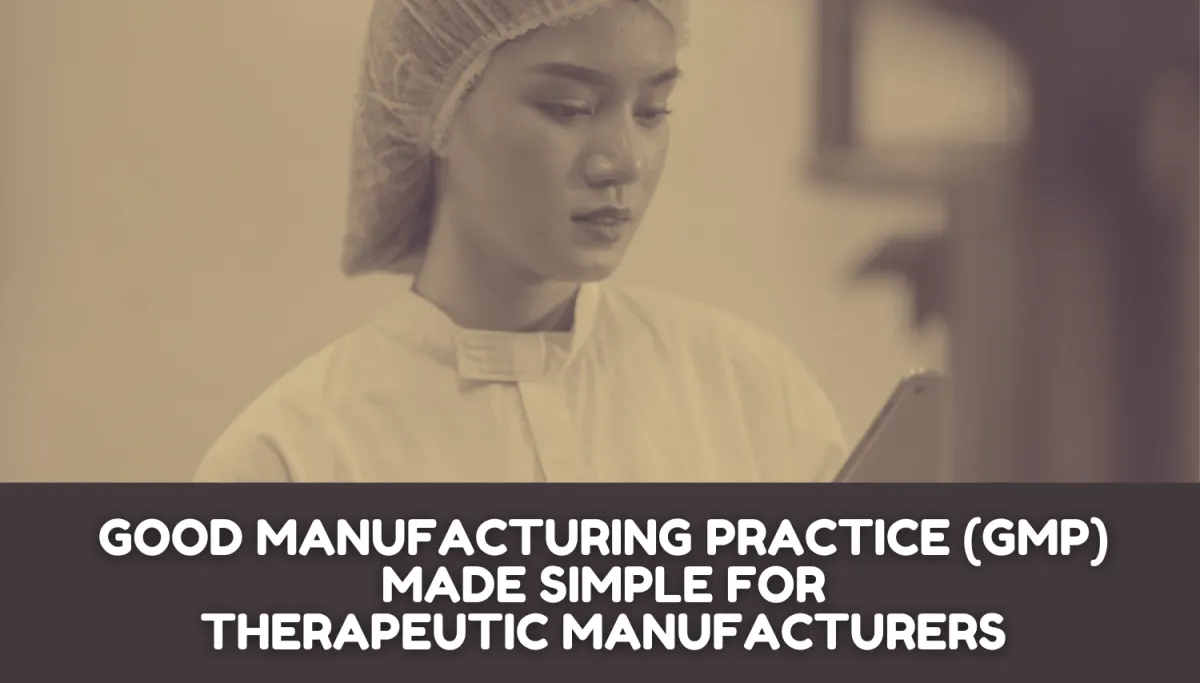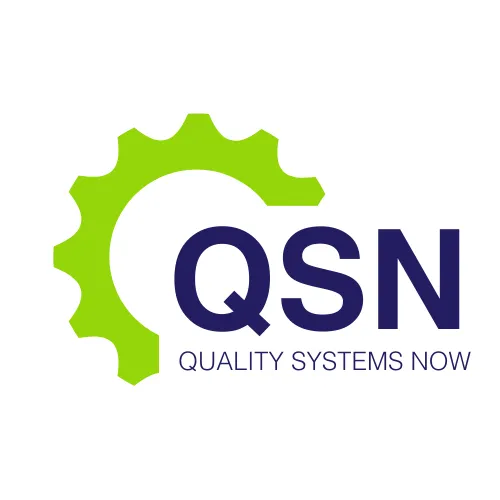LATEST NEWS

Good Manufacturing Practice (GMP) Made Simple for Therapeutic Manufacturers
Good Manufacturing Practice (GMP) is designed to ensure products are consistently produced and controlled according to quality standards. It minimizes the risks to product quality and patient safety by ensuring products are consistently manufactured to pre-defined specifications that maintain their efficacy . GMP covers all aspects of production from the starting materials, premises, and equipment to the training and personal hygiene of staff.
Australia’s regulatory landscape for GMP is overseen by the Therapeutic Goods Administration (TGA), which operates under the Department of Health. The TGA is responsible for regulating therapeutic goods, including medicines, medical devices, and biologicals, to ensure they meet acceptable standards of quality, safety, and efficacy.
At Quality Systems Now we help therapeutic manufacturers in Australia with site licensing and accreditation services. It is our mission to make GMP simple and accessible for your organisation.
General Introduction to GMP
Good Manufacturing Practice (GMP) is a cornerstone of quality assurance in the therapeutic industries. It encompasses the guidelines and regulations recommended by agencies that control the authorization and licensing of the manufacture and sale of pharmaceutical products in each country or region. The primary purpose of GMP is to ensure that products are produced consistently and controlled according to quality standards, reducing the risks involved in pharmaceutical production.
Principles of Good Manufacturing Practice
Quality Management
Quality management is a foundation for strong GMP. It ensures that medicinal products are designed and developed in a way that meets the requirements of GMP. This includes robust quality assurance processes that cover all aspects of production, from the initial design of the product to its release to the market. Key components of quality management include:
Quality Assurance (QA): A system that ensures products are consistently produced and controlled to quality standards.
Quality Control (QC): Involves the testing of raw materials, in-process materials, and finished products to ensure they meet specifications.
Continuous Improvement: Processes are regularly reviewed and improved to enhance quality.
Personnel and Training
The competence of personnel is crucial in maintaining GMP. Employees must receive adequate and ongoing training to understand the GMP regulations and their role in ensuring compliance. This includes:
Training Programs: Regular and comprehensive training sessions for employees at all levels.
Hygiene Standards: Strict personal hygiene practices to prevent contamination.
Competency Assessments: Regular evaluations to ensure that personnel are capable of performing their duties to the required standards.
Premises and Equipment
GMP mandates that facilities and equipment used in the production process are designed, operated, and maintained to ensure product quality. This involves:
Facility Design: Layouts should minimize risks of errors and contamination.
Equipment Maintenance: Regular maintenance and calibration to ensure consistent performance.
Environmental Controls: Proper environmental conditions (temperature, humidity, cleanliness) to prevent contamination.
Documentation and Record Keeping
Accurate documentation and record keeping are essential components of GMP. They provide a traceable history of the manufacturing process and are vital for identifying the cause of any quality issues. Key aspects include:
Standard Operating Procedures (SOPs): Written procedures that detail every process used by a company to manufacture therapeutic products and achieve uniformity of performance.
Batch Instructions and Records: Comprehensive instructions and records for making each batch of product.
Traceability: Documentation that ensures all materials and processes can be traced back through the production chain.
Implementation of GMP in Pharmaceutical Facilities
In pharmaceutical facilities, GMP implementation ensures that medicines are of high quality and safe for patient use. Critical areas of focus include:
Raw Material Control
The quality of raw materials is critical to the final product's quality. Pharmaceutical facilities must complete:
Supplier Qualification: Ensure that suppliers are qualified and materials meet specified standards.
Material Testing: Conduct rigorous testing of incoming materials to confirm their identity, purity, and quality is fit for purpose for the product being manufactured.
Manufacturing Process Control
Pharmaceutical manufacturing processes must be tightly controlled to ensure consistency and quality. This includes:
Process Validation: Ensuring that manufacturing processes consistently produce products meeting their predetermined specifications.
In-process Controls: Regular monitoring and adjustments during the production process to maintain quality.
Finished Product Testing
Before reaching the market, finished pharmaceutical products must undergo rigorous testing to ensure they meet all specifications for safety, efficacy, and quality. This involves:
Stability Testing: Assessing the product’s stability over over time to confirm it's shelf life.
Release Testing: Comprehensive testing of each batch before release to the market.
A Note About GMP in Veterinary Facilities
In veterinary facilities, GMP ensures that animal health products are safe and effective. Manufacturers of veterinary medicines do not follow the same GMP standards as those for human medicines. In Australia, veterinary GMP is controlled by the Australian Pesticides and Veterinary Medicines Authority (APVMA), and not by the TGA.
Manufactures who product both human and veterinary medicines must abide by strict requirements to ensure there is no cross-contamination between production of the two forms of medicines. These include but are not limited to:
Dedicated Facilities: Using separate facilities for different GMP standards.
Segregated Processes and Specifications: Products being made to different GMP standards must be strictly controlled with segregated processes and specifications.
Cleaning Protocols: Rigorous cleaning procedures between production batches.
Importance of Compliance
Compliance with GMP is not only a regulatory requirement but also a critical component of the pharmaceutical's commitment to public health. Key reasons for compliance include:
Product Safety
GMP ensures that products are consistently produced and controlled to the quality standards appropriate for their intended use. This minimizes risks such as contamination, incorrect dosage, and labelling errors, which can have serious health implications.
Market Access
Compliance with GMP is a prerequisite for market access. Regulatory bodies in all countries require GMP certification before granting approval to sell products. Non-compliance can result in severe penalties, including product recalls and loss of license to operate.
Brand Reputation
Adherence to GMP enhances a company’s reputation for quality and reliability. This trust is critical for maintaining customer loyalty and ensuring long-term business success.
Conclusion
GMP encompasses a comprehensive set of guidelines aimed at ensuring products are consistently produced and controlled according to quality standards. The implementation of GMP in pharmaceutical facilities involves stringent controls over all aspects of production, from raw material procurement to the final product release. Compliance with GMP ensures product safety and efficacy, provides access to global markets, and maintains the brand's reputation. As the pharmaceutical continue to evolve, adherence to GMP will remain crucial in ensuring the delivery of high-quality, safe, and effective products to the market.
